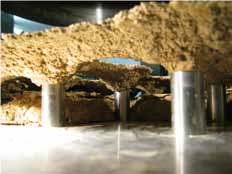

Archaeologists have recently unearthed oak piles sunk deeply into the sand beneath the remains of a Gallo-Roman road between Juliomagus (present-day Angers) and Caesarodonum (the Roman name for Tours), built in 8 BC.

Pile-supported embankment enables building on very soft soil with low weight bearing capacity. Concrete piles are set up in regular grid into the ground up to a better bearing layer of soil. A gravel bed is then laid on the grid of rigid inclusions. The structure is then built on the gravel layer, whose role is to transfer the weight of the structure to the rigid inclusions, which in turn transfer this weight to the bearing layer beneath.
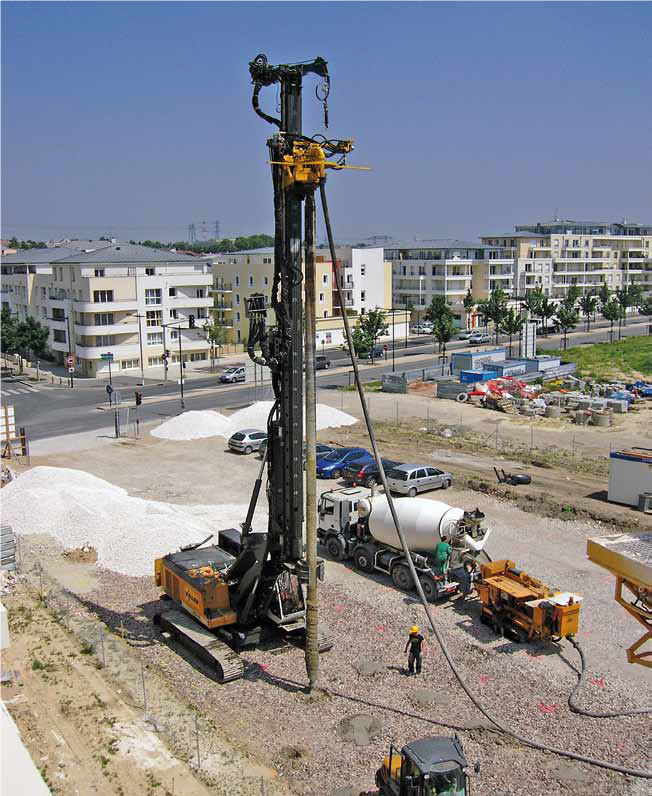
Holes are bored by a drilling rig, using an auger (a helical screw that both drills and removes the drilled-out material) or a vibro-percussive drilling tube (which vibrates as it bores down).
When the bearing layer is reached, concrete is poured into the drill hole through the drilling head as it is raised.
The preference is given to soil displacement technique which can displace and compact the soil around the circumference of the borehole without any spoil.
Rigid inclusions enable building on very soft soil but also reinforce ground for specific types of structures.
Concrete floors and foundations of industrial buildings
Stocks and activities in industrial buildings, and therefore the weight on their floors and foundations, vary from day to day. The use of gantry cranes and heavy load-handling vehicles creates mobile weight stresses. Rigid inclusions transfer these occasional loads to the bearing layer beneath.
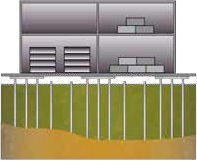
Wind turbine
The rotation of the blades of the wind turbine causes intermittent solicitation of part of the foundations of the structure. Rigid inclusions transfer this asymmetric and repeated charge to the rock.
Work in seismic zone
Rigid inclusions help dampen ground movements during an earthquake; they are part of the techniques reducing the seismic risk.
Bridge approach embankment
Bridge approach embankment is required to access to a bridge built higher than the natural soil level. Rigid inclusions beneath the embankment ensure optimum transition between the embankment and the bridge built on piles.
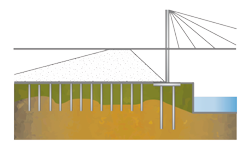
Water tanks and reservoirs
The level of water in a water tank or reservoir, and therefore its weight, varies. Rigid inclusions transfer this uniform but fluctuating weight to the bearing layer beneath.
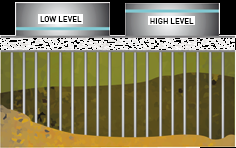
Railway and road embankments
Thanks to rigid inclusions, it is possible to build a road or a railroad track on soft ground, reducing the settlements of the structure.
Although rigid inclusions have been used in France since the 1980s, there have been few studies of their interaction with the soil and the gravel bed, and their long-term behaviour. The ASIRI national research project, carried out by forty industrial and university partners for the Institute for Experimental Research (IREX) between 2004 and 2012, formulated recommendations regarding the behaviour of structures built on rigid inclusions and enabling the their design. This technique can now be used entirely safely for buildings such as large-scale retail outlets and logistic warehouses.
In situ and laboratory experiments have allowed us to study the mechanisms of rigid inclusions.
For soft soil that has been compacted by 10 centimeters without reinforcement, it is considered on average that rigid inclusions reduce compaction to 1 centimeter.
